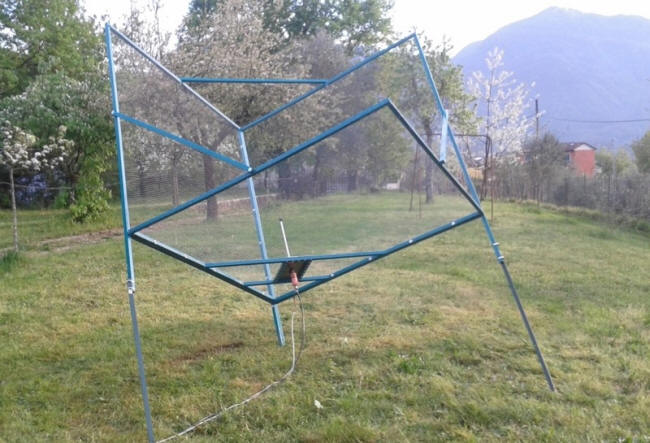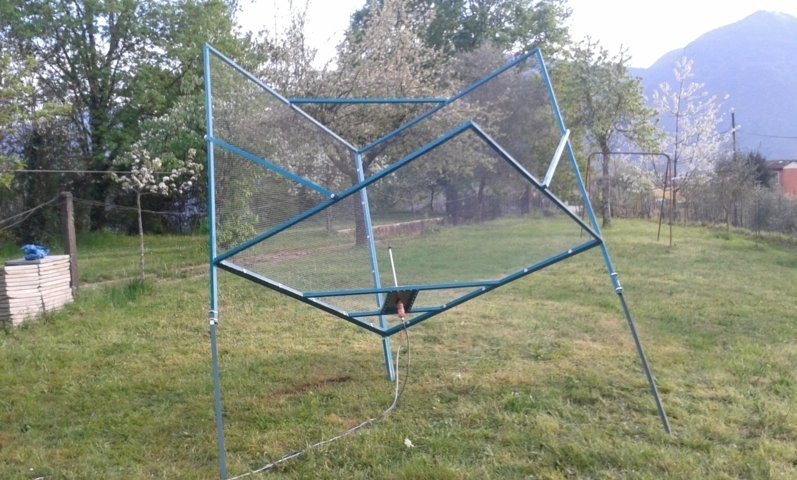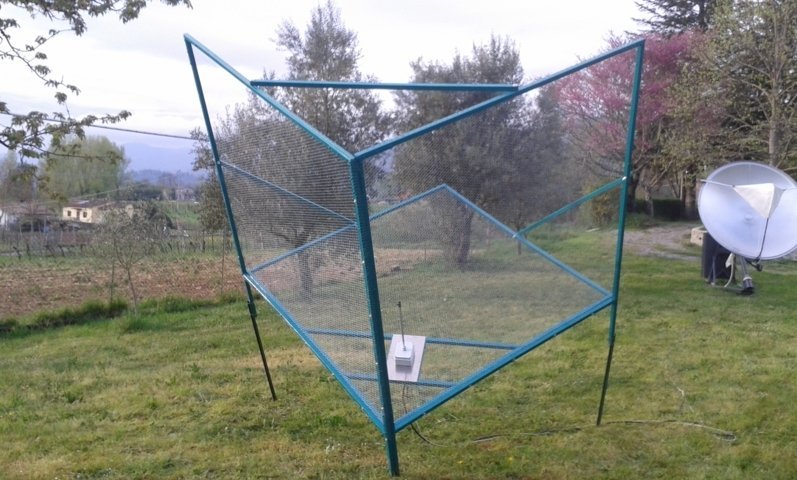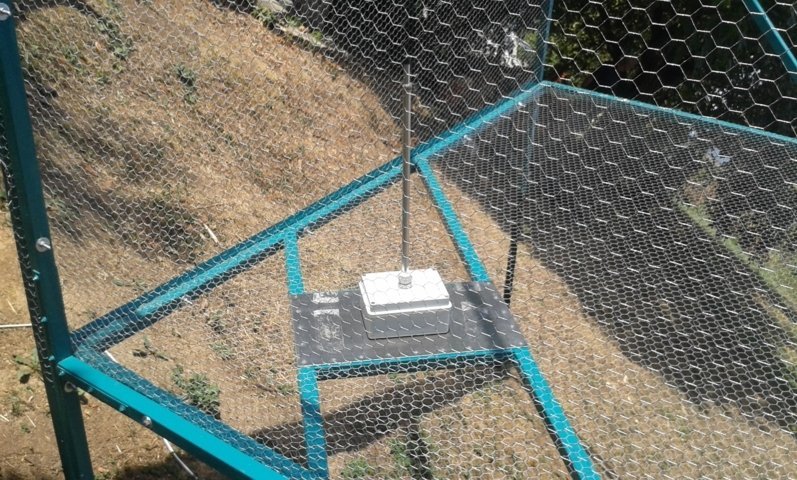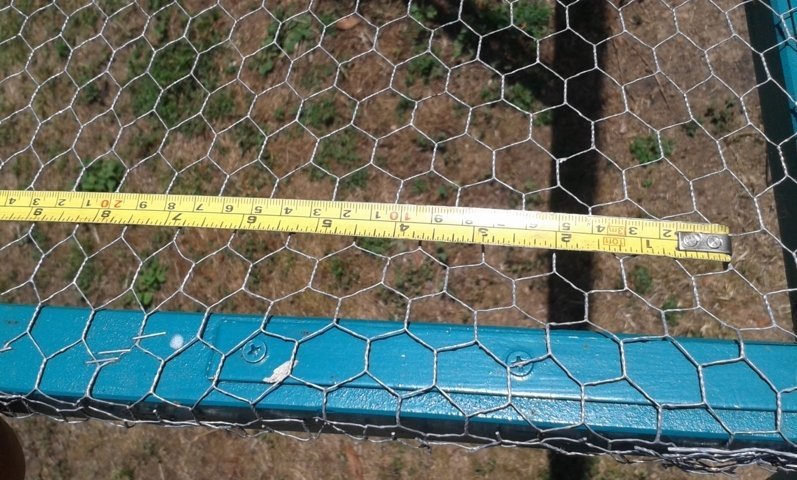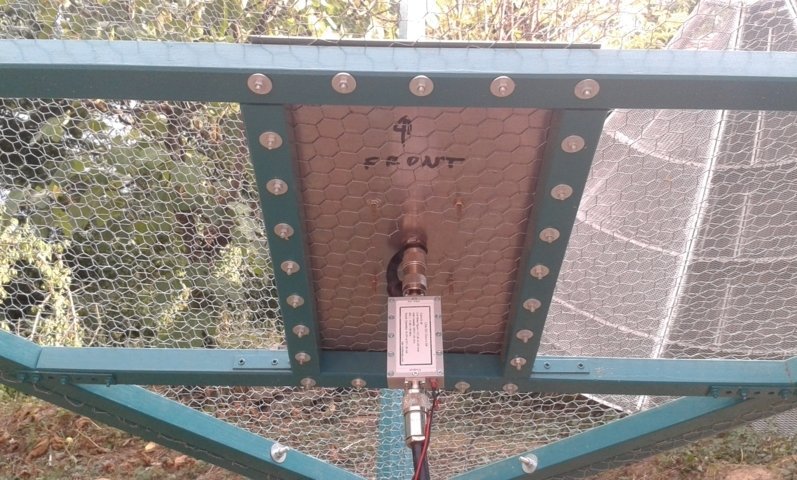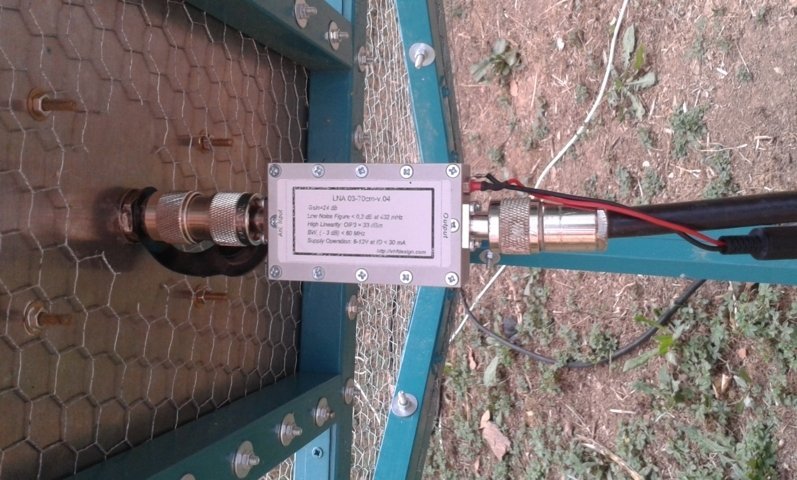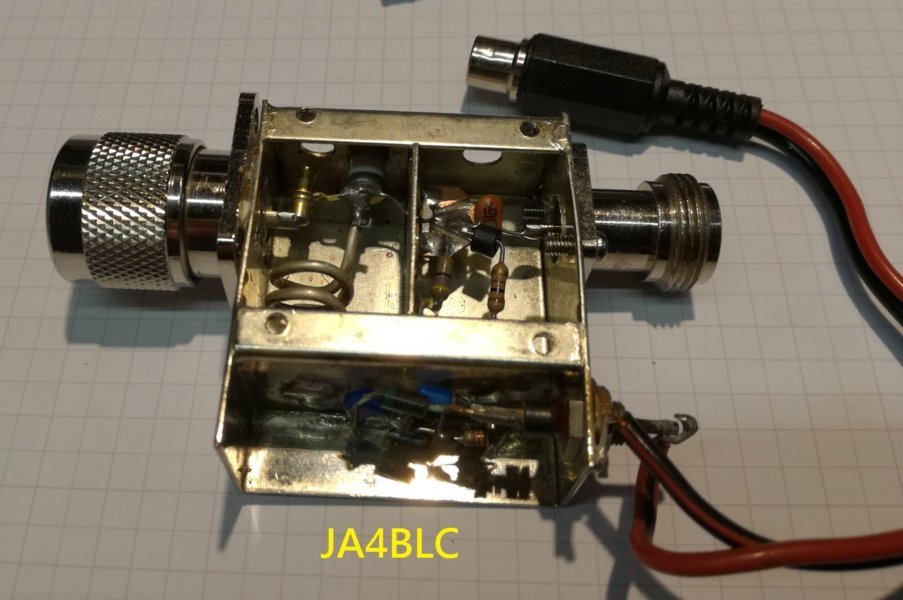Introduction
For a general overview of activities carried by Amateur Radio Astronomers, see
Neutron Star Group
an introduction to successful amateurs maintained by Steve Olney VK2XV.
For a more detailed description of pulsar characteristics which need to be understood to achieve success see Challenges for Amateur Pulsar Detection by Steve Olney VK2XV.
For a more detailed description of pulsar characteristics which need to be understood to achieve success see Challenges for Amateur Pulsar Detection by Steve Olney VK2XV.
Receiving System
- JA4BLC low noise preamplifier (NF = 0.3dB, low cost solution)
- LNA 03-70cm from US4ICI (NF = 0.3dB, commercial solution)
- LNA FOR ALL
- SDR USB Dongle with 1 PPM temperature compensated oscillator (TCXO) available at rtl-sdr.com
Antenna
- 3D Corner reflector (equivalent to a 2.2 metre diameter dish)
- Fixed pointing (drift-scan mode), integration time = 2 hours
- 3 panels 2x2mt, wooden frame with metallic mesh - constructed by Maurizio Gragnani (IU5BEC)
- Beam size HxV = 30°x22°, low temperature ~ 15K
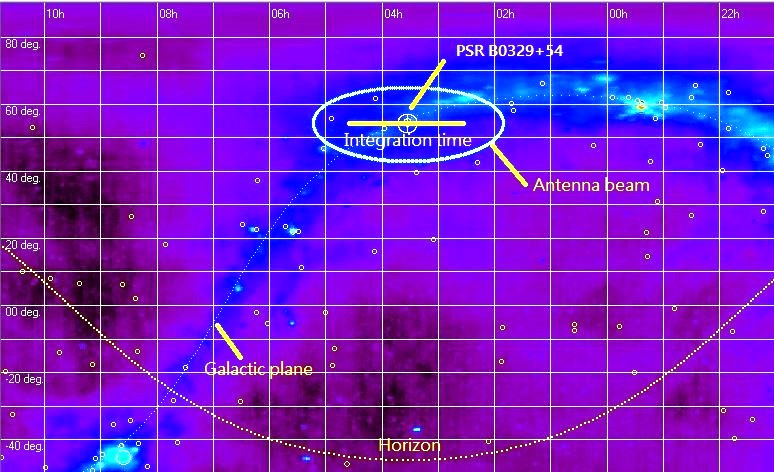
Radiometer Equation
The radiometer equation (ref. "Handbook of Pulsar Astronomy" by D. Lorimer & M. Kramer) is a general law that allows to estimate the minimum detectable flux density for a given setup:

Where:
ΔSmin = minimum detectable flux density (watts per square metre per hertz - averaged over the period of the pulse)
β = factor for imperfections in the observatory system, usually near to 1 (values >1 makes the system less sensitive)
kb = Boltzmann's constant (1.38064852 x 10-23 Joules • K-1)
S/Nmin = required minimum linear S/N for validation of result (professional require at least 6, amateurs ≥ 4)
Tsys = System noise temperature (Ko)
Ae= antenna aperture (m2)
np = number of polarisations (usually 1 for amateurs, generally a maximum of 2)
tint = integration time (observation time in seconds)
Δf = pre-detection bandwidth (Hz)
W = width of pulse (seconds)
P = period of pulse (seconds)
Encapsulated in MURMUR by Mario Natali I0NAA
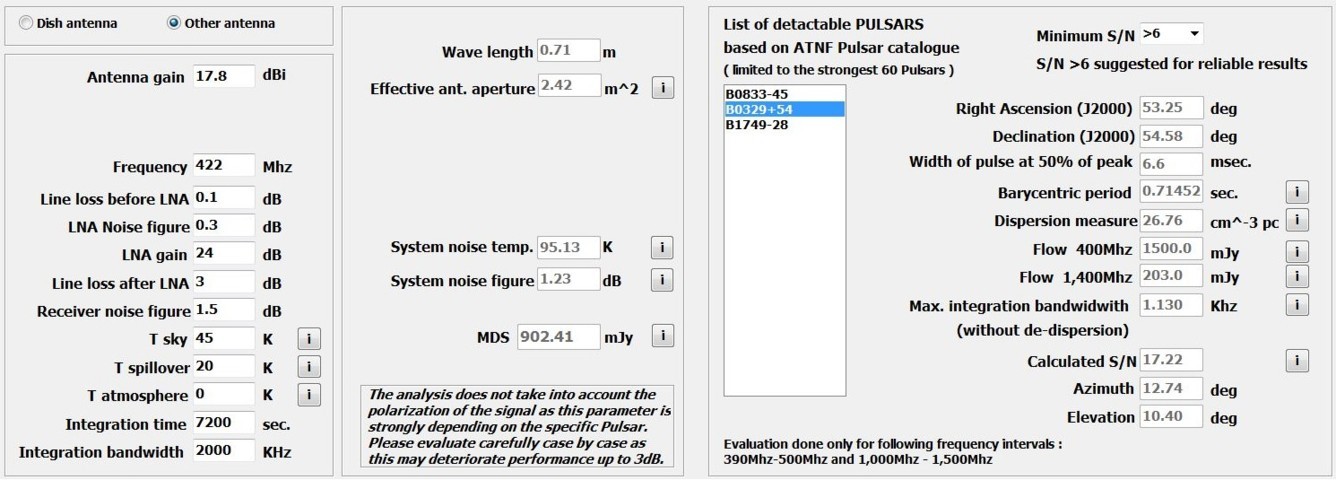
Example of application. IW5BHY's setup is in compliance with the pulsar radiometer equation.
ΔSmin = minimum detectable flux density (watts per square metre per hertz - averaged over the period of the pulse)
β = factor for imperfections in the observatory system, usually near to 1 (values >1 makes the system less sensitive)
kb = Boltzmann's constant (1.38064852 x 10-23 Joules • K-1)
S/Nmin = required minimum linear S/N for validation of result (professional require at least 6, amateurs ≥ 4)
Tsys = System noise temperature (Ko)
Ae= antenna aperture (m2)
np = number of polarisations (usually 1 for amateurs, generally a maximum of 2)
tint = integration time (observation time in seconds)
Δf = pre-detection bandwidth (Hz)
W = width of pulse (seconds)
P = period of pulse (seconds)
Encapsulated in MURMUR by Mario Natali I0NAA
Method of detection
The I/Q data stream of 2.4 Msps coming from the dongle is processed on-line through a bank of 4 complex FFT filters of bandwidth 500KHz each. Each filter produces a stream of 2Ksps, whose samples represent the total power in the filter bandwidth. Four channels of decimated 16-bit data are stored, 2Ksps each (8Ksps total = 16Kbytes per second).
Predictions of pulsar pulse frequency calculated using TEMPO CALC provided by Joe Taylor (K1JT) and hosted by Joe Martin K5SO
